Recently I wrote a blog about mound-building termites. One thing led to another, and my research brought me to another animal, an animal that has evolved to hunt termites in their mounds: the aardvark.
Aardvark (Orycteropus Afer)
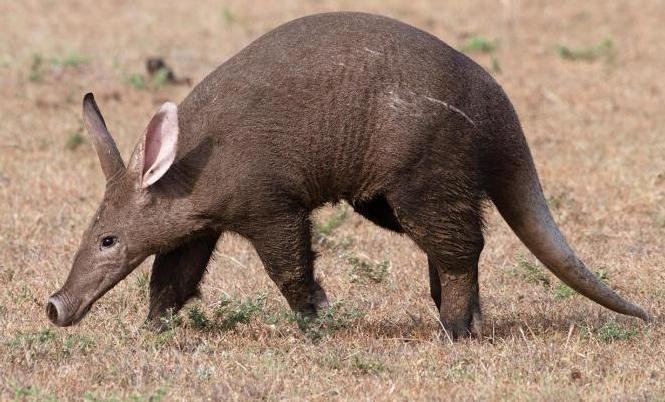
Image credit: Dave Brown, from iNaturalist. Used under CC 1.0
Years ago, when I was helping my granddaughter read, I learned that 'Aardvark' was the word used to introduce young readers to the letter 'A'. I employed that mnemonic device myself, as my granddaughter and I worked together, but I had no clear idea of what an aardvark was. Now I know.
An aardvark is a rarely-seen animal that looks a lot like an anteater. Both animals have a similar profile because both feed almost exclusively on ants and termites. Their bodies have evolved so they can be successful at hunting ground-dwelling insects.
Giant Anteater (Myrmecophaga Tridactyla)
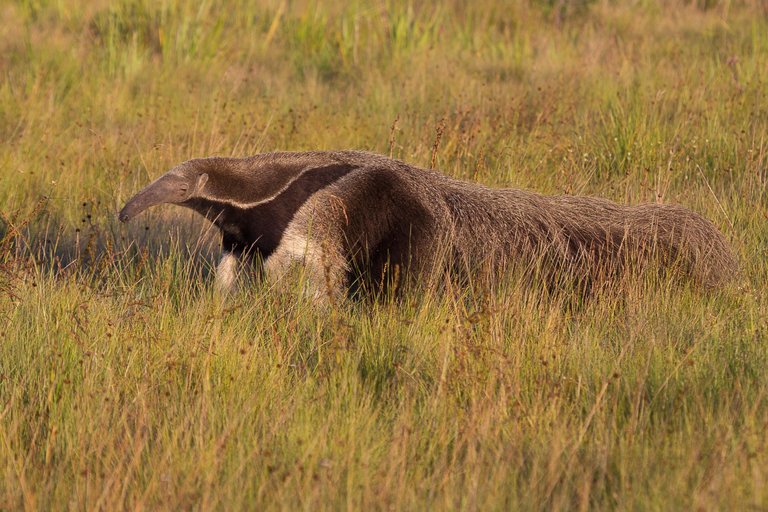
Image credit: Nortondefeis. Used under CC Attribution Share-Alike 4.0 International license.
While a cursory glance at the anteater and the aardvark might suggest a kinship between the two--because of their distinctive physiognomy--that assumption would be false. The animals are not related. They belong to different taxonomic orders, live on different continents, and have evolved from distinct antecedents.

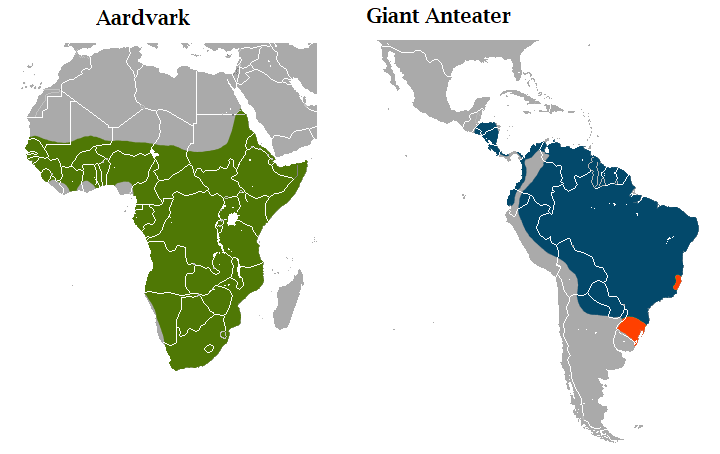
Image credit: Made from two maps:Aardvark map; Anteater Map Both maps used under Attribution-Share Alike 3.0 Unported license. Both attributed to: IUCN Red List of Threatened Species, species assessors and the authors of the spatial data. Author for both maps: Chermundy

The aardvark belongs to the order Tubulidentata and is sometimes called a living fossil, because its evolution has been stable for about 50 million years. It is the only extant member of the Tubulidentata order. Its last direct ancestor died in the late Pleistocene era (2 million to 10,000 years ago).
The anteater belongs to the order Pilosa, and is related to the sloth.
Three-toed Sloth (Bradypus variegatus)
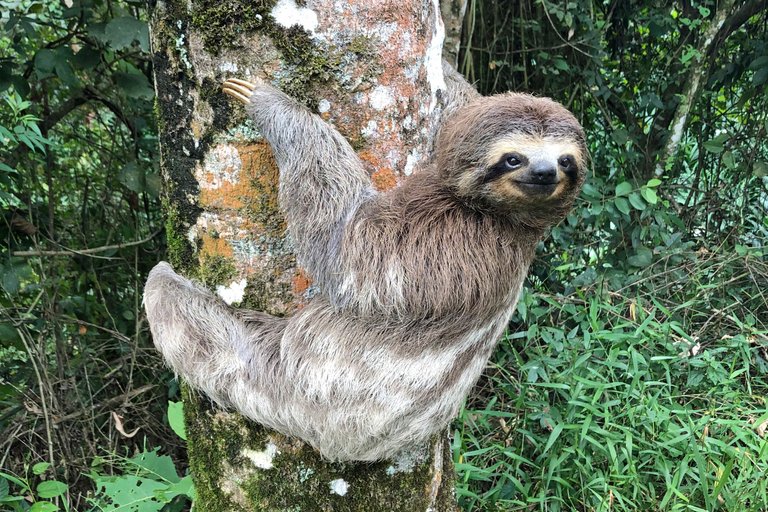
Image credit: Daniella Maraschiello. Used under CC attribution share-alike 4.0 International license.
Both the anteater and the aardvark are keystone species. It is considered that their loss would have a profound effect on the ecology of their respective geographic areas.
The Aardvark
Why is the aardvark so important to its environment? The animal has been little studied, until recently. It is more likely to find evidence of the aardvark's presence than it is to see the animal itself. That evidence includes burrows the aardvark excavates. It is the aardvark's prodigious digging activity, and its role in controlling ant/termite populations, that make this odd-looking animal vital to the Sub-Saharan ecology.
The aardvark, in a sense, is a landscape engineer with its digging and burrow excavation. The animal has effectively become the chief hotelier for mammals in Sub-Saharan Africa. Aardvark burrows dot the landscape and offer shelter to at least 17 African mammals. These mammals include small animals, such as ground squirrels and porcupines. The holes also accommodate large predators, such as the leopard and hyena.
Here is a Youtube video that takes us into aardvark territory. Our guide in the video is Dr. Phillip Alcott, a scientist who studies aardvarks in their natural element. In Dr. Alcott's view, the aardvark is the most essential animal to the Sub-Saharan ecosystem.
One animal that is heavily dependent on aardvark holes is the warthog. This toothsome animal likes to live underground and is perfectly capable of digging its own hole. However, it commonly takes up residence in abandoned aardvark holes--or it finds burrows left by other animals.
According to Wikipedia (citation van Aarde, 1984) the aardvark digs several types of burrows: refuge, resting, foraging and nesting. An aardvark can dig fast--within ten minutes it can have itself underground and out of reach from a predator such as a lion or hyena. A conveniently placed burrow can offer desperate escape from a predator.
Here is a Youtube video that shows an aardvark as it makes a dash for a burrow and barely escapes the jaws of a hyena (but it does escape!).
The aardvark in the video should not have been out in the daylight. Harsh circumstances--increasing drought and loss of food supply--are forcing some aardvarks to forage in the daylight. Under extreme stress, aardvarks, which are nocturnal animals, become diurnal. Deprived of sufficient nutrition, they lose the ability to generate body heat, and eventually die. They starve to death.
Southern Aardvark Burrow
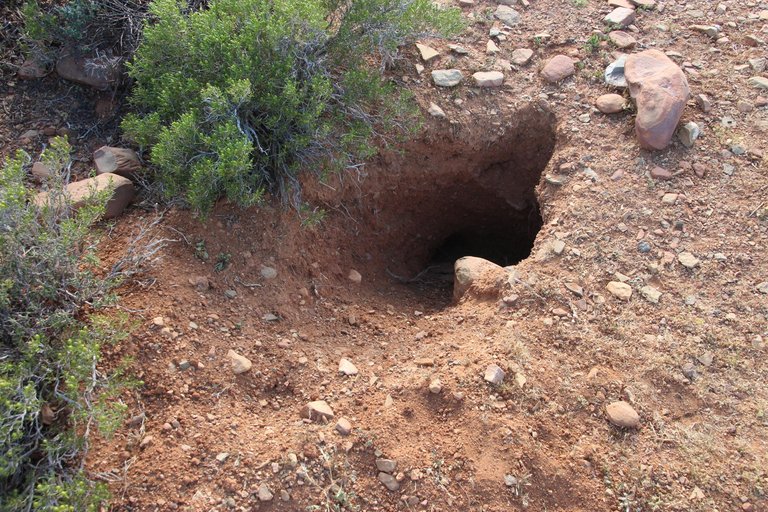
Image credit:(c) Tony Rebelo, some rights reserved (CC BY-SA) in iNaturalist.
By far the most extensive of the aardvark's burrows is the one used for nesting. This burrow actually may be more like a complex. It can be 40 feet long, 10 feet deep, and may contain numerous tunnels and entrances.
It is in the nesting burrows that the aardvark raises its young. It is believed the aardvark is polygynous. The male mates with many females, but the female only mates with one male.
I found differing data on aardvark statistics. Several sites state that the aardvark has one offspring per litter and that the gestation period is 7 months (one site says eight months). Lifespan reports vary from 18 years to 23 years. At 6 or 7 months the young aardvark is said to be eating solid food, foraging, digging holes and is on its own.
The aardvark's digging ability enables it to create burrows, and also is the lifeline to its food source: termites and ants. The aardvark's highly specialized anatomy is almost a miracle of evolutionary adaptation. The animal's body is designed to hunt, excavate and eat insects that live underground. Hence its principal diet of ants and termites.
Here is a Youtube (night) video of an aardvark hunting for and feeding on its underground prey.
The aardvark has a keen sense of smell, perhaps keener than any other mammal--it has more olfactory turbinate bones than any mammal. The olfactory sense enables the animal to detect prey underground. The aardvark has very poor sight, but long ears that offer enhanced hearing.
The animal's long snout and sticky long tongue is designed for reaching into holes and extracting insects.
Here is a Youtube video that shows an aardvark's tongue at work
https://www.youtube.com/shorts/VJm-oMuqL7U?app=desktop
In the summer months, the aardvark feeds more readily on ants because these insects build their nests close to the surface in warm weather. In winter, the ants go deep underground and the aardvark is more likely to feed on termites.
The aardvark has a particular nasal adaptation. It can close its nostrils when it is eating, so that insects cannot climb into its nose.
One of the aardvark's most important physical features: its claws. These powerful claws can tear through the cement-like exterior of a termite mound quickly.
The Aardvark Cucumber (Cucumis humifructus)
The title of this blog is The Aardvark, the Termite and the Cucumber. So far, there has been no mention of a cucumber. I end with a final note of peculiarity about the very unusual aardvark. It has a symbiotic relationship with a cucumber.
The aardvark is the only animal known to feed on a particular cucumber, Cucumis humifructus, that grows underground. It is believed this is the only plant the aardvark eats and it is believed the animal derives much-needed moisture from the fruit.
Without the aardvark the cucumber would not survive. It needs the aardvark to disperse its seeds in excrement. Since the aardvark's daily peregrinations are quite far-reaching--they may travel 6 miles in a night--the cucumber's seeds are widely disbursed.
Fruit of the Aardvark Cucumber (Cucumis humifructus)
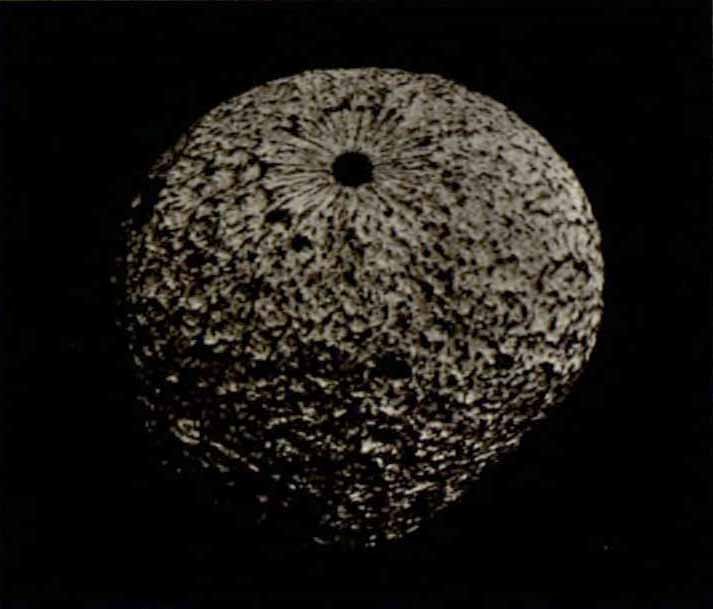
Image credit: Sydney M. Stent. Public domain.
I hope you found this brief excursion into one of nature's novel animals an interesting read.
Thank you for visiting my blog. Hive on!
https://blog.wcs.org/photo/2018/07/14/aardvarks-weird-and-wonderful-bronx-zoo-africa/
https://www.edgeofexistence.org/blog/aardvarks-the-most-evolutionarily-distinct-mammals/
https://today.oregonstate.edu/news/scientists-collect-aardvark-poop-understand-how-species-impacted-climate-africa
https://www.africa-wildlife-detective.com/aardvarks.html
https://animals.sandiegozoo.org/animals/warthog
https://www.marylandzoo.org/animal/common-warthog/
https://en.wikipedia.org/wiki/Aardvark
https://kids.nationalgeographic.com/animals/mammals/facts/aardvark
https://pubmed.ncbi.nlm.nih.gov/28724691/
https://www.ncbi.nlm.nih.gov/pmc/articles/PMC7358442/
https://www.opengroup.org/austin/aardvark/aardvark.html
https://www.apex-expeditions.com/blog/aardvark-encounter-southern-kalahari/
https://animaldiversity.org/accounts/Orycteropus_afer/
https://a-z-animals.com/animals/aardvark/
https://www.nationalgeographic.com/animals/mammals/facts/aardvark
https://africat.org/aardvark-research/
https://www.gbif.org/species/113283575
https://www.tribes.co.uk/blog/threat-global-climate-change-aardvarks/
https://www.safariltd.com/blogs/toys-that-teach/aardvark-week
https://ulovane.co.za/2017/03/16/ulovane-update-aardvark-cucumber/
https://everything2.com/title/Aardvark+Cucumber
https://www.thoughtco.com/aardvark-profile-129412
https://www.ifaw.org/animals/anteaters
https://news.mongabay.com/2020/02/study-investigates-impact-of-road-deaths-on-giant-anteater-population-in-cerrado/
https://en.wikipedia.org/wiki/Xenarthra
https://www.edgeofexistence.org/blog/aardvarks-the-most-evolutionarily-distinct-mammals/
http://www.nhc.ed.ac.uk/index.php?page=134.170.284


